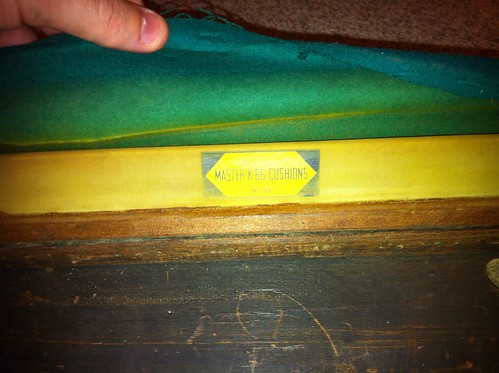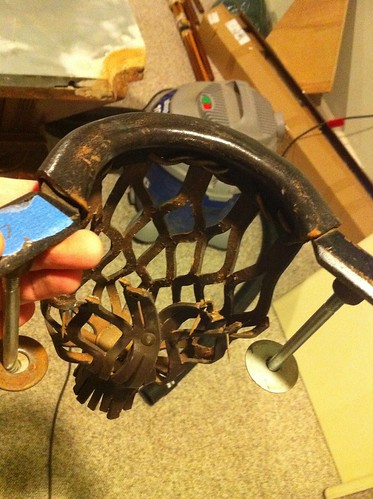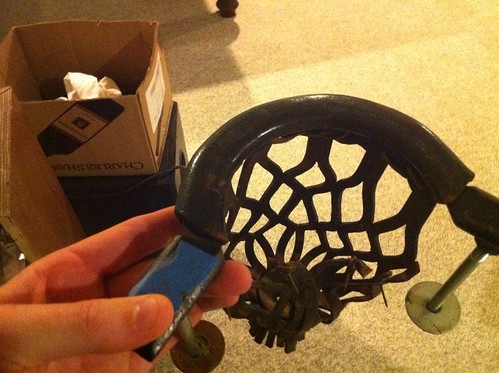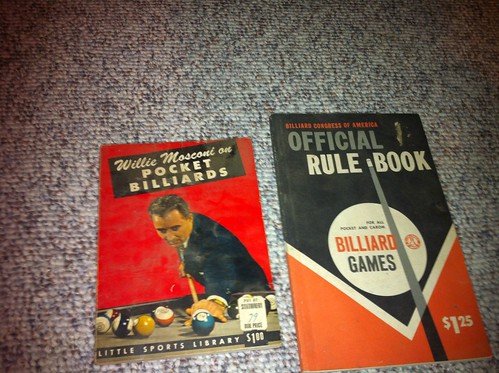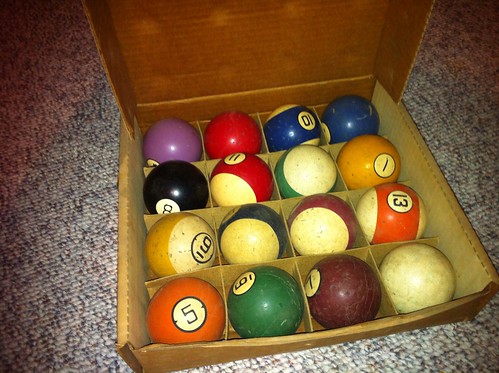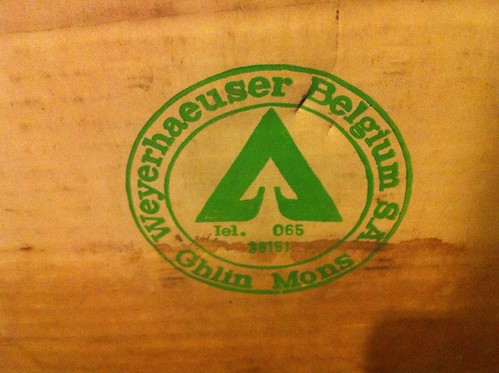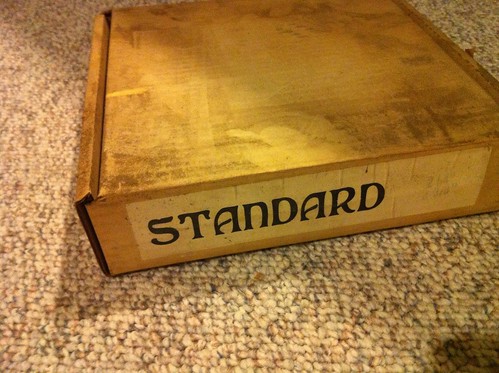So this is my first post here. I've been lurking for quite a while reading posts and trying to learn some things about re-felting and replacing pockets on older pool tables.
Anyways I was hoping someone would be able to help me identify this table. It was my grandfathers and I know he got it sometime in the 50's or 60's (sorry can't be more precise than that). I believe he got it used out of a pool hall, and it was in pretty rough shape when he got it. Anyways my dad and I recently took it apart up in NJ (taking tons of pictures and drawings, and keeping all the parts in zip lock bags) so we could put it back together in my basement in MD. So here's a few photos I have of it in various stages of assembly, that I hope will help to identify it.
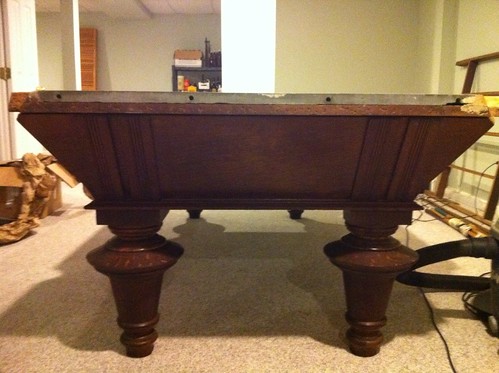 This is the table with the slate on it in my basement from the end.
This is the table with the slate on it in my basement from the end.
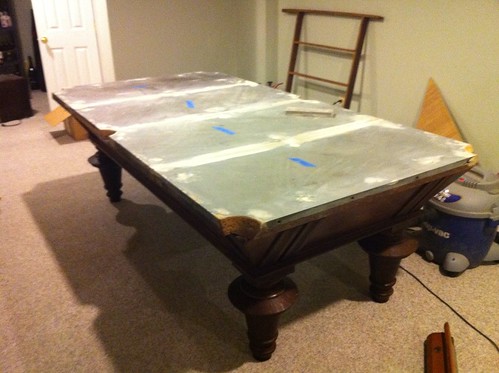 It's 4 piece slate, with the pocket holes shaped out of wood
It's 4 piece slate, with the pocket holes shaped out of wood
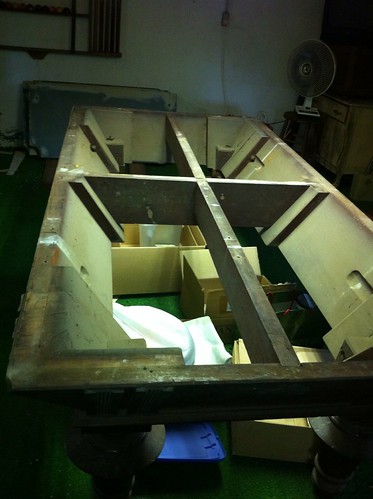 This is a picture of it in my grandparents basement. The wood was black with dirt and smoke? from when it was in the bar I assume, and we got most of that off, and then put some old english on the wood to help keep it looking good. The base came apart and went back together quite easily and ended up being almost perfectly flat and level with only minor adjustment. There are quite a few places where trim was broken off, but the structure seemed in pretty good shape. My grandfather even made a custom tool for getting the square head bolts out, and for the pin heads on the rail bolts so that was really useful.
This is a picture of it in my grandparents basement. The wood was black with dirt and smoke? from when it was in the bar I assume, and we got most of that off, and then put some old english on the wood to help keep it looking good. The base came apart and went back together quite easily and ended up being almost perfectly flat and level with only minor adjustment. There are quite a few places where trim was broken off, but the structure seemed in pretty good shape. My grandfather even made a custom tool for getting the square head bolts out, and for the pin heads on the rail bolts so that was really useful.
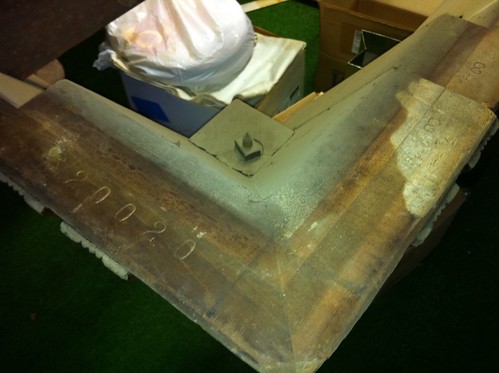 There is this number stamped in to most of the parts (20020) so I don't know if that was a model number, serial number or date).
There is this number stamped in to most of the parts (20020) so I don't know if that was a model number, serial number or date).
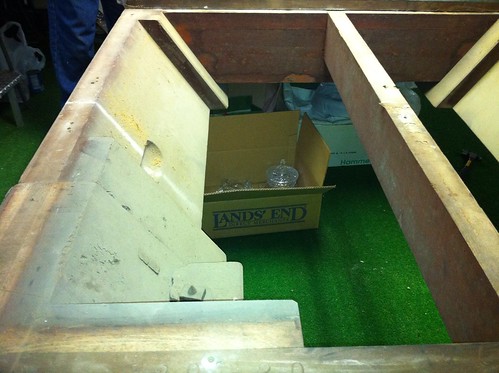
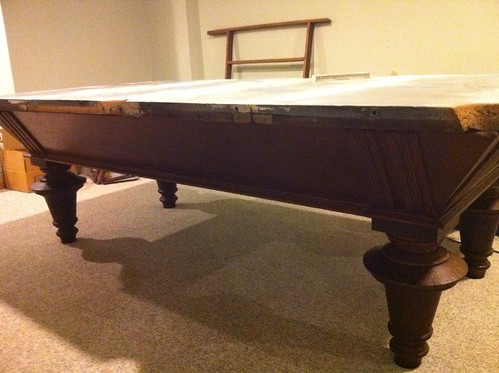 We got all the slate put back on the base. Took quite a while getting the top of the slate all in the same plane. in the pool supplies there was a can of Durhams rock hard water putty, so I went out and got a new can to use to fill in the cracks and screw holes. Luckily since we spent so much time leveling and shimming the slate the gaps didn't take hardly any putty, and the main place we put it was in the screw holes.
We got all the slate put back on the base. Took quite a while getting the top of the slate all in the same plane. in the pool supplies there was a can of Durhams rock hard water putty, so I went out and got a new can to use to fill in the cracks and screw holes. Luckily since we spent so much time leveling and shimming the slate the gaps didn't take hardly any putty, and the main place we put it was in the screw holes.

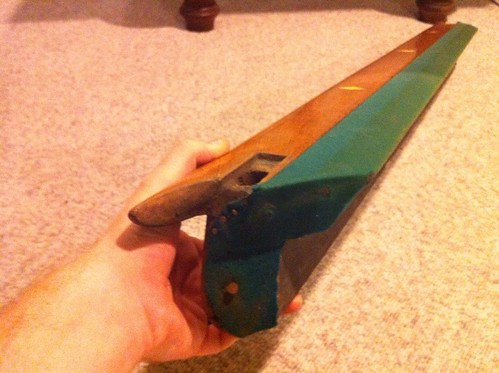

These are the rails, that I'm currently taking off the felt to re-cover them with new felt.
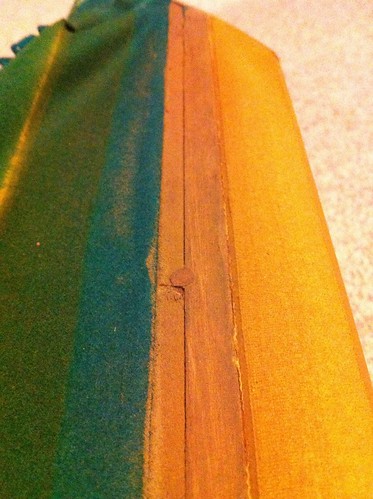
I did find that the strip that holds the felt in on the top of the rail had been nailed in by whomever re-covered these last time. Is that normal? and can you buy replacement wood strips for these (i.e. are they a standard size). I could fairly easily cut some strips of wood on my table saw and hand trim them to fit in the slots, but if they're fairly standard I'd rather buy a proper strip.
Hmmm, looks like I'm limited to 10 pictures per post ... will have to break this up into 2 posts in that case
Anyways I was hoping someone would be able to help me identify this table. It was my grandfathers and I know he got it sometime in the 50's or 60's (sorry can't be more precise than that). I believe he got it used out of a pool hall, and it was in pretty rough shape when he got it. Anyways my dad and I recently took it apart up in NJ (taking tons of pictures and drawings, and keeping all the parts in zip lock bags) so we could put it back together in my basement in MD. So here's a few photos I have of it in various stages of assembly, that I hope will help to identify it.
 This is the table with the slate on it in my basement from the end.
This is the table with the slate on it in my basement from the end. It's 4 piece slate, with the pocket holes shaped out of wood
It's 4 piece slate, with the pocket holes shaped out of wood This is a picture of it in my grandparents basement. The wood was black with dirt and smoke? from when it was in the bar I assume, and we got most of that off, and then put some old english on the wood to help keep it looking good. The base came apart and went back together quite easily and ended up being almost perfectly flat and level with only minor adjustment. There are quite a few places where trim was broken off, but the structure seemed in pretty good shape. My grandfather even made a custom tool for getting the square head bolts out, and for the pin heads on the rail bolts so that was really useful.
This is a picture of it in my grandparents basement. The wood was black with dirt and smoke? from when it was in the bar I assume, and we got most of that off, and then put some old english on the wood to help keep it looking good. The base came apart and went back together quite easily and ended up being almost perfectly flat and level with only minor adjustment. There are quite a few places where trim was broken off, but the structure seemed in pretty good shape. My grandfather even made a custom tool for getting the square head bolts out, and for the pin heads on the rail bolts so that was really useful. There is this number stamped in to most of the parts (20020) so I don't know if that was a model number, serial number or date).
There is this number stamped in to most of the parts (20020) so I don't know if that was a model number, serial number or date).
 We got all the slate put back on the base. Took quite a while getting the top of the slate all in the same plane. in the pool supplies there was a can of Durhams rock hard water putty, so I went out and got a new can to use to fill in the cracks and screw holes. Luckily since we spent so much time leveling and shimming the slate the gaps didn't take hardly any putty, and the main place we put it was in the screw holes.
We got all the slate put back on the base. Took quite a while getting the top of the slate all in the same plane. in the pool supplies there was a can of Durhams rock hard water putty, so I went out and got a new can to use to fill in the cracks and screw holes. Luckily since we spent so much time leveling and shimming the slate the gaps didn't take hardly any putty, and the main place we put it was in the screw holes.


These are the rails, that I'm currently taking off the felt to re-cover them with new felt.

I did find that the strip that holds the felt in on the top of the rail had been nailed in by whomever re-covered these last time. Is that normal? and can you buy replacement wood strips for these (i.e. are they a standard size). I could fairly easily cut some strips of wood on my table saw and hand trim them to fit in the slots, but if they're fairly standard I'd rather buy a proper strip.
Hmmm, looks like I'm limited to 10 pictures per post ... will have to break this up into 2 posts in that case
